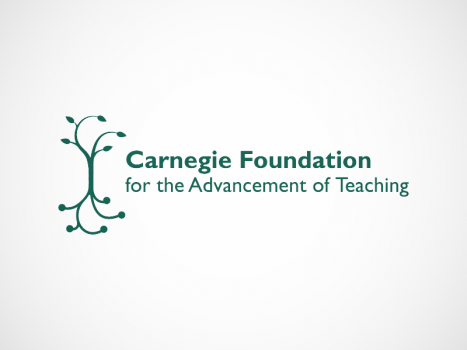On day two of the Carnegie National Forum, improvement specialist and associate, Lawrence Morales, introduced and launched five subnetworks within the Carnegie Pathways Networked Improvement Communities. The following post is part of the materials shared with the participants in today’s opening session.
Introduction
Last year, Carnegie launched both Pathways across multiple states and colleges. This year, our Networked Improvement Community (NIC) shifts its emphasis to more formal and structured improvement work done by many of us in the NIC. One key way in which we will do this is through the formation of what we call “subnetworks.”
What is a subnetwork?
A subnetwork (sometimes referred to as a “subnet”) is a team of NIC members who are working on a specific problem, challenge, or development priority. A subnetwork has the following work-related properties:
- The work of the subnetwork cuts across multiple colleges (and perhaps pathways).
- The problem, challenge or priority the subnetwork addresses is one with enduring quality. That is, the work continues over time and is not just the creation of materials or resources.
The work of the subnetwork aligns with the master Pathways driver diagram (an improvement tool used to organize a practical theory into its key components for development and improvement work).
In addition to these basic properties, subnetworks currently have common structuring properties:
- Each subnetwork is co-led by a Carnegie-affiliated member and a faculty member.
- Each subnetwork is guided by a recognized charter. (A document that clearly describes the goals of the subnetwork and how it will do its work.)
- Each subnetwork will choose and use the appropriate tools to accomplish its work. (Not all subnetworks will use the same tools.)
- Each subnetwork will have access to content experts who can help inform its work.
Descriptions of Launching Subnetworks
1. Assessment
Carnegie Leader: Carnegie Vice President Paul LeMahieu (interim)
Faculty Leader: To be determined
The Assessment subnetwork will explore the uses of assessment within the NIC Pathways, including the development of more diverse assessments for use in Pathways courses. Both Quantway and Statway will have separate work groups to develop these items. However, the subnetwork will also learn more about effective assessment techniques and tools with the intent of promoting these practices across the Pathways.
2. Language and Literacy
Carnegie Leaders: Karen Givvin (at UCLA, working on Alpha Labs and Lesson Study as well as Language and Literacy) and Kim Gomez
Faculty Leader: To be determined
This subnetwork will develop and test various strategies for reducing the gap in learning outcomes between students with low and high English language and literacy skills.
3. Productive Persistence
Carnegie Leader: Lawrence Morales
Faculty Leader: Nicole Gray
This subnetwork will work towards helping students productively persist by increasing their overall sense of belonging. Based on extensive analysis of last year’s productive persistence survey and persistence results, we have identified three areas we think we can address: students’ sense of belonging in the Pathways class, students’ beliefs that their instructors care about their success, and students’ comfort with asking questions in class. This subnet will use tools from the field of improvement science to do its work.
4. Quantway Development
Carnegie Leader: Cinnamon Hillyard (new Quantway director)
Faculty Leader: To be determined
This subnetwork will be improving the Quantway curriculum. The primary focus for this year will be integrating more skill-building activities into the Quantway curriculum. We will also be reviewing lesson length, building a glossary of terms, and creating more exercises outside of class to improve the course package.
5. Statway Development
Carnegie Leader: Karon Klipple
Faculty Leader: To be determined
This subnetwork will propose and prioritize improvements to the Statway curriculum. Members may be involved in the research, design, development and/or review of one or more such improvements. Examples include creating developmental mathematics supports, integrating the lessons and MyStatway, reviewing materials, creating projects, and designing a bridge course to pre-calculus. The scope of the work will depend upon the interest of team members.
July 24, 2012
The high levels of student success from the first year of Statway and Quantway highlight the power of working together, across campuses as a Networked Improvement Community.
August 13, 2012
In Reinventing Discovery: The New Era of Networked Science, Michael Nielsen explains how the internet has created the conditions for a completely open research field in which increased collaboration can help spur innovation.






